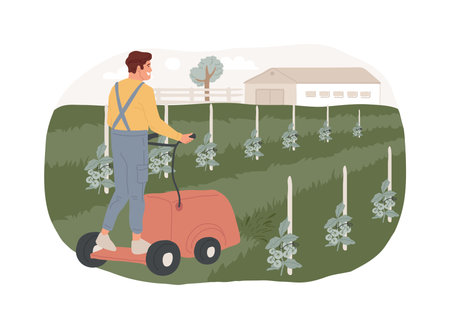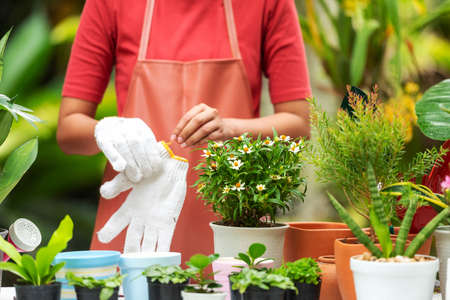Introduction: Embracing Herbal Traditions in Indian Homes
In every corner of India, from bustling metros to serene villages, herbs have held a revered place in households for centuries. These humble plants are woven into the very fabric of daily life, celebrated not just for their culinary value but also for their deep spiritual and medicinal significance. Ancient Indian customs, rooted in Ayurveda and Vedic traditions, honour herbs like Tulsi (Holy Basil), Neem, Curry Leaf, and Mint as sacred gifts of nature. These green companions are believed to purify the environment, ward off negative energies, and promote physical well-being. During festivals and auspicious occasions—be it Diwali, Makar Sankranti, or Navratri—herbs play a crucial role in rituals and offerings, symbolising prosperity, protection, and harmony. By nurturing a home herb garden, Indian families continue this timeless tradition, connecting with their roots while enhancing their health and spirituality. The care given to these plants is more than routine gardening; it is an act of devotion that honours both heritage and holistic wellness.
2. Herb Garden Planning for Festivals
Planning your herb garden with Indian festivals in mind brings a beautiful blend of tradition, sustainability, and cultural joy to your home. Each festival in India is associated with specific herbs that carry religious significance, medicinal value, or culinary importance. Here are some tips on selecting and planting herbs commonly used during Diwali, Holi, and Makar Sankranti.
Choosing Festival-Specific Herbs
When planning your herb garden, it’s wise to think about which festivals are most important in your family and region. Different states may have varying traditions, but the following table highlights popular herbs linked to major Indian festivals:
| Festival | Commonly Used Herbs | Cultural Significance |
|---|---|---|
| Diwali | Tulsi (Holy Basil), Marigold (for garlands) | Tulsi is worshipped for prosperity; Marigold garlands are used for decoration and rituals. |
| Holi | Neem, Dhaniya (Coriander), Palash flowers | Neem is used in skin care after Holi colours; Coriander in festive dishes; Palash flowers for natural colour. |
| Makar Sankranti | Tulsi, Ajwain (Carom), Sesame | Tulsi is part of rituals; Ajwain aids digestion after festive foods; Sesame seeds are auspicious. |
Tips for Planting Herbs for Festivals
- Seasonal Sowing: Plan sowing schedules based on when each herb is needed. For example, start Tulsi seeds during monsoon so the plant matures by Diwali.
- Sunlight Requirements: Most festival herbs like Tulsi and Neem thrive in full sunlight. Ensure at least 6-8 hours of sun daily.
- Soil Preparation: Use well-draining soil enriched with organic compost. This supports healthy growth and strong aroma—important for ritual use.
Quick Guide: When to Plant Key Festival Herbs
| Herb | Sowing Time |
|---|---|
| Tulsi | June-July (monsoon) |
| Coriander | September-October (pre-winter) |
| Neem | June-July (start of rains) |
Cultural Touch: Herbal Rituals at Home
Create a small “puja corner” in your herb garden for Tulsi, as many Indian homes traditionally dedicate a space for Tulsi worship. During festivals, involve family members—especially children—in harvesting leaves or preparing herbal offerings. This keeps age-old traditions alive and fosters a deeper connection with nature.

3. Traditional Care Practices: Following the Lunar Calendar
In India, the rhythm of life often follows the cycles of the moon, and this connection extends beautifully to herb garden care. Many seasoned gardeners and families observe herbal routines in alignment with the Indian lunar calendar, believing that certain days are more auspicious for specific gardening activities. For example, Ekadashi (the eleventh day of each lunar fortnight) is considered a spiritually potent day when many people fast and avoid plucking fresh leaves or flowers from sacred plants like Tulsi. Instead, Ekadashi is seen as a time for gentle tending—watering the herbs lightly and offering prayers rather than harvesting.
Caring During Amavasya and Poornima
Amavasya (new moon) and Poornima (full moon) are other significant phases that influence herb garden routines. On Amavasya, some gardeners prefer not to disturb the plants, instead focusing on cleaning the garden area, loosening soil gently, or applying organic fertilizers like cow dung or compost. It is believed that such tasks help rejuvenate the earth’s energy during this calm lunar phase. Conversely, Poornima is regarded as an auspicious time to sow new seeds or propagate cuttings, as it symbolizes fullness and growth in many Indian traditions.
Festival-Specific Herbal Practices
Throughout the year, Indian festivals such as Makar Sankranti, Navratri, and Diwali also mark special herbal care rituals. During Navratri, for instance, households may decorate their Tulsi plant with garlands and lamps, refraining from cutting its leaves out of respect for the goddess. On Makar Sankranti, adding sesame seed mulch to herb beds is considered beneficial for soil health during winter months. Such festival-linked practices are deeply woven into the tapestry of daily life and garden care in India.
Blending Tradition with Practicality
By observing these traditional timings and rituals rooted in the lunar calendar, Indian herb gardeners not only honour cultural beliefs but also foster sustainable growing habits. These age-old customs encourage mindful interaction with plants—promoting rest periods for both gardener and garden, and celebrating moments of renewal as guided by nature’s own clock.
4. Ayurvedic Wisdom and Plant Maintenance
Ayurveda, the ancient Indian science of life, offers deep insights into the nurturing of herb gardens in harmony with nature’s rhythms. Following Ayurvedic principles not only enhances the vitality of your garden but also aligns your gardening practices with age-old wisdom. For Indian households, incorporating Ayurveda means caring for plants holistically—using natural fertilisers, mindful watering, and observing eco-friendly habits that respect both the seasons and local traditions.
Natural Fertilisers from Indian Households
Traditional Ayurvedic methods encourage the use of natural fertilisers, many of which are easily available in Indian kitchens. Common examples include cow dung manure, compost made from vegetable scraps, and buttermilk spray for enhancing soil fertility. These organic options enrich the soil without introducing harsh chemicals.
| Fertiliser | Source | Benefits |
|---|---|---|
| Cow Dung Manure | Cattle farms or local vendors | Improves soil texture and provides essential nutrients |
| Vegetable Compost | Kitchen waste | Recycles household waste and boosts soil organic matter |
| Buttermilk Spray | Diluted leftover buttermilk | Acts as a mild pesticide and soil conditioner |
Sustainable Watering Practices Inspired by Ayurveda
Ayurveda teaches balance—even in watering. Overwatering can harm delicate herbs like tulsi (holy basil) or pudina (mint). Instead, water early mornings or late evenings to minimise evaporation, especially during festivals like Navratri when many families fast and water usage is culturally mindful. Use rainwater harvesting methods or recycled household water wherever possible.
Watering Guide According to Herb Type
| Herb | Preferred Watering Time | Frequency (Summer) |
|---|---|---|
| Tulsi (Holy Basil) | Early morning | Daily light watering |
| Pudina (Mint) | Evening | Alternate days |
| Coriander (Dhania) | Morning/Evening | Every 2-3 days |
Cultural Note:
During auspicious days like Ekadashi or Poornima, some Indian families prefer minimal disturbance to sacred plants such as tulsi. Respect these traditions by planning maintenance around festival calendars, ensuring your herb garden remains vibrant while staying rooted in cultural values.
5. Festive Rituals: Harvesting and Usage
Guidance on Harvesting Herbs During Indian Festivals
In India, the act of harvesting herbs from your garden takes on special significance during major festivals and pujas. Traditionally, the most auspicious time to harvest sacred herbs like tulsi (holy basil), neem, or mango leaves is early morning, preferably after a light bath and before consuming food. This ritual purity is believed to enhance the sattvic (pure) nature of the herbs. Always use clean hands or dedicated tools when plucking, and avoid taking too much from a single plant to respect its vitality—a practice rooted in ancient Vedic wisdom.
Offering Herbs in Puja: Cultural Etiquette
Once harvested, herbs are often washed gently with pure water. For household pujas, it is common to offer fresh tulsi leaves to Lord Vishnu or Krishna, while betel leaves are used for Ganesha and Lakshmi worship. Mango leaves strung together as toran adorn doorways during festivals like Diwali and Ugadi, symbolizing prosperity and positive energy. When offering any herb, always place it with reverence—using your right hand—and recite traditional mantras or shlokas according to family customs.
Using Garden Herbs in Festive Foods and Remedies
Many Indian homes incorporate freshly harvested herbs into festive prasad (offerings) or ayurvedic remedies. For example, tulsi is added to chai during Kartik month or made into herbal decoctions for health during monsoon festivals. Coriander and mint from the garden find their way into chutneys and garnishes for celebratory meals. Sharing these home-grown herbs with guests is considered a gesture of hospitality and goodwill, deeply embedded in Indian tradition.
Respectful Disposal of Used Herbs
After puja rituals, used herbs are never discarded carelessly. They are either immersed in running water (such as rivers), placed under sacred trees like peepal or banyan, or composted respectfully within the garden itself—thus completing the cycle of reverence and sustainability as taught by Indian culture.
6. Sharing and Gifting Herbs in Indian Society
In Indian culture, the act of sharing and gifting herbs holds a special place, deeply intertwined with traditions and values. During festivals like Diwali, Makar Sankranti, and even family gatherings, it is common to exchange herbal plants such as tulsi (holy basil), curry leaf, mint, or ajwain as symbols of health and prosperity. These exchanges are not just tokens of goodwill but also reinforce the importance of herbal wellness in daily life.
Herbal Gifts for Auspicious Occasions
Presenting potted herbs during housewarmings (Griha Pravesh), weddings, or baby showers (Godh Bharai) is considered auspicious. Tulsi especially is revered in Hindu households; gifting a tulsi plant is believed to bring positive energy and blessings to the recipient’s home. Similarly, neem and aloe vera are shared for their healing properties.
Homemade Herbal Preparations
Alongside living plants, it is also customary to prepare and gift homemade herbal concoctions—such as infused oils, dried spice blends (masalas), or fresh chutneys—during festive seasons. These homemade gifts reflect care, effort, and a personal touch that strengthens bonds between families and friends.
Community and Sustainable Practices
The tradition of exchanging herbs encourages sustainable gardening habits within neighbourhoods. By sharing plant cuttings or seeds during get-togethers or community events, people promote biodiversity and inspire others to grow their own kitchen gardens. This collective approach nurtures both social ties and environmental consciousness.
In essence, integrating herb sharing into your festival routines not only honours age-old customs but also enhances your connections with loved ones. The next time you celebrate an Indian festival or attend a family function, consider gifting a thoughtfully grown herb from your garden—it’s a gesture that truly keeps on giving.
7. Conclusion: Sustaining Heritage Through Herb Gardening
Embracing the ancient tradition of herb gardening is much more than a simple horticultural practice in India; it is a meaningful way to keep our ecological and spiritual heritage alive. By cultivating sacred and medicinal herbs such as Tulsi, Neem, and Ashwagandha, we honour our rich tapestry of festivals, rituals, and traditional wisdom handed down through generations. These plants are not only integral to our religious ceremonies like Diwali, Navratri, and Janmashtami but also play a crucial role in Ayurveda, household remedies, and community well-being.
Caring for these traditional herbs at home—watering them with intention, using organic methods, and respecting seasonal cycles—connects us deeply to Mother Earth (Bharat Mata) and reminds us of the symbiotic relationship celebrated in Indian culture. Sharing cuttings with neighbours during festivals or teaching children about the significance of each plant helps weave together social bonds rooted in respect for nature.
As you nurture your herb garden, remember that you are cultivating more than just plants—you are preserving living symbols of India’s ecological balance and spiritual identity. Let us encourage every home to grow these precious herbs so that future generations continue to benefit from their healing properties and cultural significance. Together, through mindful herb gardening inspired by Indian festivals and traditions, we sustain our heritage and contribute to a greener, more harmonious world.


